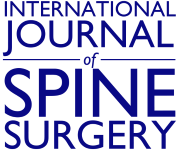Abstract
Background Despite the advances in anterior cervical corpectomy and fusion (ACCF) as a reconstructive surgical technique, the rate of complications related to artificial implants remains high. The purpose of this study was to investigate the long-term clinical course of ACCF with tantalum trabecular metal (TTM)-lordotic implants. Focus is placed on the relevance and influence of implant subsidence on sagittal alignment and the related clinical implications.
Methods Retrospective, observational study of prospectively collected outcomes including 56 consecutive patients with degenerative cervical disc disease (myelopathy and/or radiculopathy). All patients underwent 1-level or 2-level ACCF with TTM-lordotic implants. The mean duration of follow-up was 4.85 years.
Results The fusion rate at the end of follow-up was 98.11% (52/53). Implant subsidence occurred in 44 (83.01%) cases, including slight subsistence (<3 mm) in 37 (69.81%) and severe subsidence (>3 mm) in 7 cases (13.2%). The greatest degree of subsidence developed in the first 3 months postoperatively (P = 0.003). No patients presented a significant increase in implant subsidence beyond the second year of follow-up. The most common site of severe subsidence was the anterior region of the cranial end plate (4/7). At the end of follow-up, C1-C7 lordosis and segmental-Cobb angle of the fused segment increased on average by 5.06 ± 8.26 and 1.98 ± 6.02 degrees, respectively, though this difference failed to reach statistical significance (P > 0.05). Visual analog scale and Neck Disability Index scores improved at the conclusion of follow-up (P < 0.05).
Conclusions ACCF with anterior cervical reconstruction using TTM-lordotic implants and anterior cervical plating for treatment of cervical degenerative disease has high fusion rates and good clinical outcome. The osteoconductive properties of TTM provide immediate stabilization and eliminate the need for bone grafts to ensure solid bone fusion. Before fusion occurs, asymptomatic implant settlement into the vertebral body is inevitable. However, lack of parallelism and reduced contact surface between the implant and the vertebral end plate are major risk factors for severe further subsidence, which may negatively affect the clinical outcomes.
Level of Evidence 4.
- anterior cervical corpectomy
- anterior cervical fusion
- tantalum, cervical spine
- subsidence
- graft collapse
- cervical lordosis
- trabecular metal
Footnotes
Funding I certify that no financial and/or material support was received for this research or the creation of this work.
Declaration of Conflicting Interests Félix Tomé-Bermejo reports that he received a speaker honorarium from Zimmer Biomet, Spineart, and DePuy Synthes. Luis Álvarez-Galovich reports that he is on the speaker’s bureau for Spineart, Zimmer Biomet, and Nuvasive. Ángel Piñera-Parrilla reports that he has received a speaker honorarium from Spineart.
Disclosure The authors report no financial disclosures related to this article.
- This manuscript is generously published free of charge by ISASS, the International Society for the Advancement of Spine Surgery. Copyright © 2022 ISASS. To see more or order reprints or permissions, see http://ijssurgery.com.






